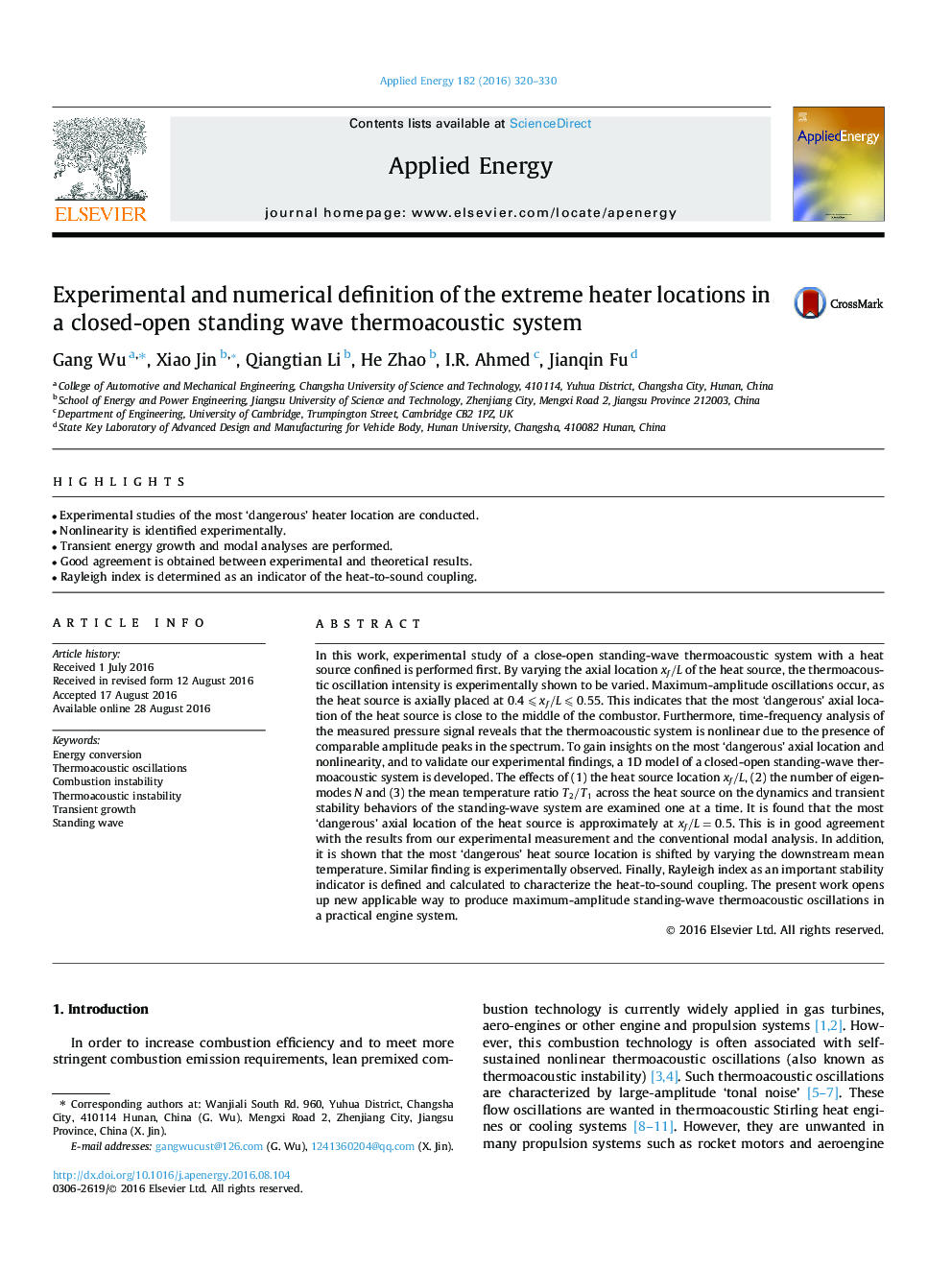| کد مقاله | کد نشریه | سال انتشار | مقاله انگلیسی | نسخه تمام متن |
|---|---|---|---|---|
| 6478897 | 1428106 | 2016 | 11 صفحه PDF | دانلود رایگان |
- Experimental studies of the most 'dangerous' heater location are conducted.
- Nonlinearity is identified experimentally.
- Transient energy growth and modal analyses are performed.
- Good agreement is obtained between experimental and theoretical results.
- Rayleigh index is determined as an indicator of the heat-to-sound coupling.
In this work, experimental study of a close-open standing-wave thermoacoustic system with a heat source confined is performed first. By varying the axial location xf/L of the heat source, the thermoacoustic oscillation intensity is experimentally shown to be varied. Maximum-amplitude oscillations occur, as the heat source is axially placed at 0.4⩽xf/L⩽0.55. This indicates that the most 'dangerous' axial location of the heat source is close to the middle of the combustor. Furthermore, time-frequency analysis of the measured pressure signal reveals that the thermoacoustic system is nonlinear due to the presence of comparable amplitude peaks in the spectrum. To gain insights on the most 'dangerous' axial location and nonlinearity, and to validate our experimental findings, a 1D model of a closed-open standing-wave thermoacoustic system is developed. The effects of (1) the heat source location xf/L, (2) the number of eigenmodes N and (3) the mean temperature ratio T2/T1 across the heat source on the dynamics and transient stability behaviors of the standing-wave system are examined one at a time. It is found that the most 'dangerous' axial location of the heat source is approximately at xf/L=0.5. This is in good agreement with the results from our experimental measurement and the conventional modal analysis. In addition, it is shown that the most 'dangerous' heat source location is shifted by varying the downstream mean temperature. Similar finding is experimentally observed. Finally, Rayleigh index as an important stability indicator is defined and calculated to characterize the heat-to-sound coupling. The present work opens up new applicable way to produce maximum-amplitude standing-wave thermoacoustic oscillations in a practical engine system.
Journal: Applied Energy - Volume 182, 15 November 2016, Pages 320-330
